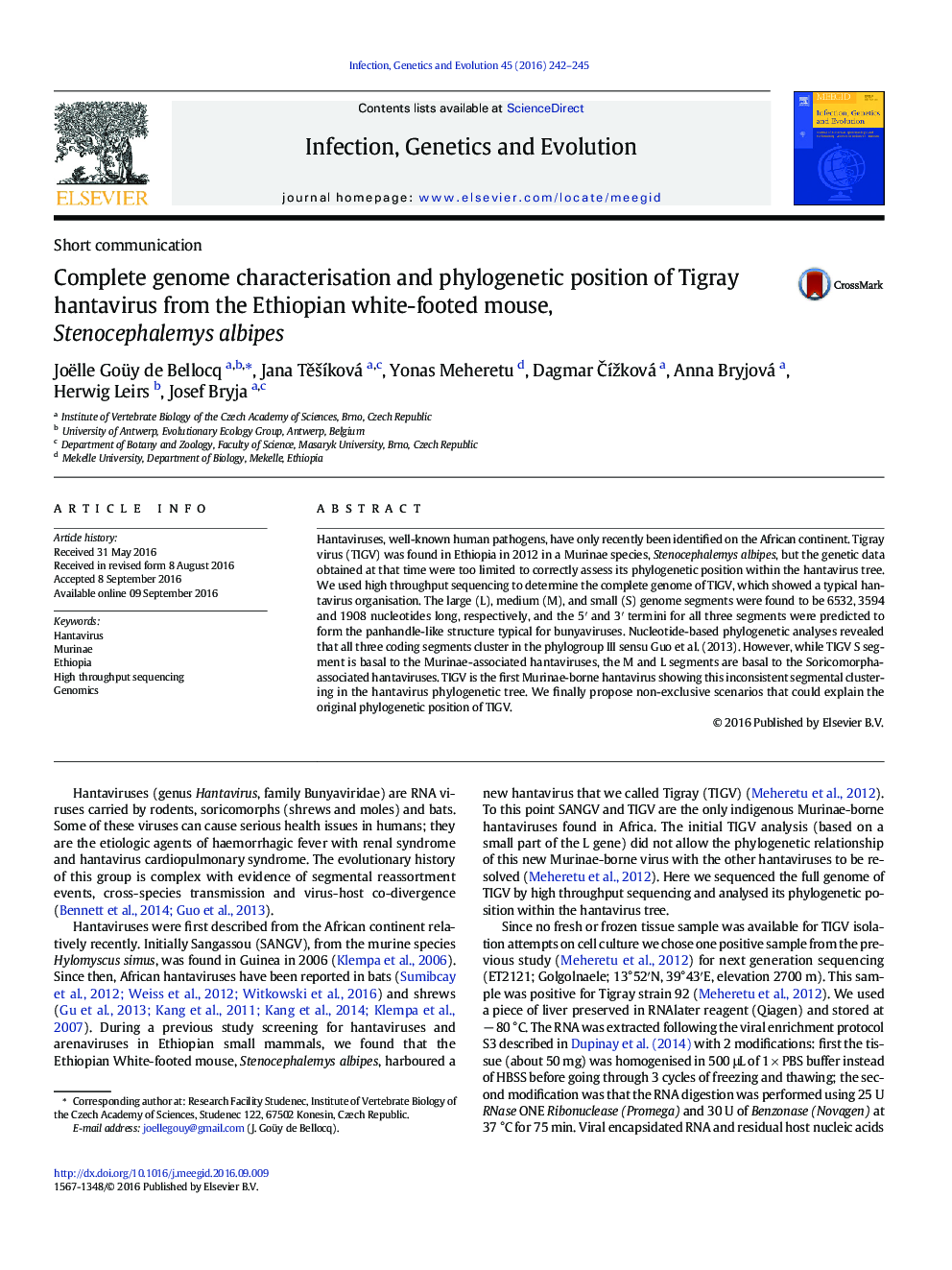| Article ID | Journal | Published Year | Pages | File Type |
|---|---|---|---|---|
| 2822882 | Infection, Genetics and Evolution | 2016 | 4 Pages |
•Full genome of the Ethiopian hantavirus Tigray determined by high throughput sequencing•Tigray has typical genomic organisation of hantaviruses.•Unique phylogenetic position of Tigray for a Murinae-borne hantavirus
Hantaviruses, well-known human pathogens, have only recently been identified on the African continent. Tigray virus (TIGV) was found in Ethiopia in 2012 in a Murinae species, Stenocephalemys albipes, but the genetic data obtained at that time were too limited to correctly assess its phylogenetic position within the hantavirus tree. We used high throughput sequencing to determine the complete genome of TIGV, which showed a typical hantavirus organisation. The large (L), medium (M), and small (S) genome segments were found to be 6532, 3594 and 1908 nucleotides long, respectively, and the 5′ and 3′ termini for all three segments were predicted to form the panhandle-like structure typical for bunyaviruses. Nucleotide-based phylogenetic analyses revealed that all three coding segments cluster in the phylogroup III sensu Guo et al. (2013). However, while TIGV S segment is basal to the Murinae-associated hantaviruses, the M and L segments are basal to the Soricomorpha-associated hantaviruses. TIGV is the first Murinae-borne hantavirus showing this inconsistent segmental clustering in the hantavirus phylogenetic tree. We finally propose non-exclusive scenarios that could explain the original phylogenetic position of TIGV.
